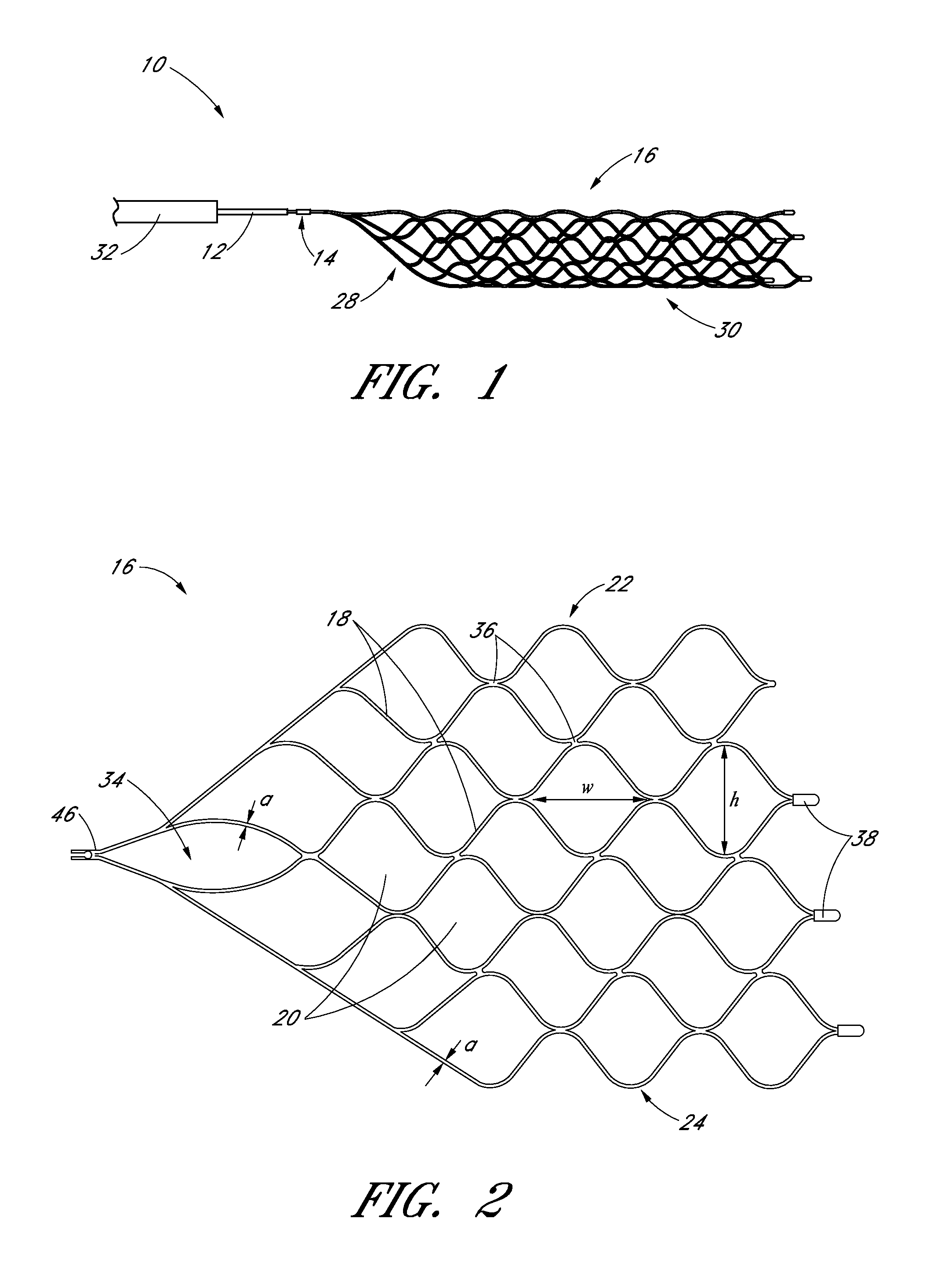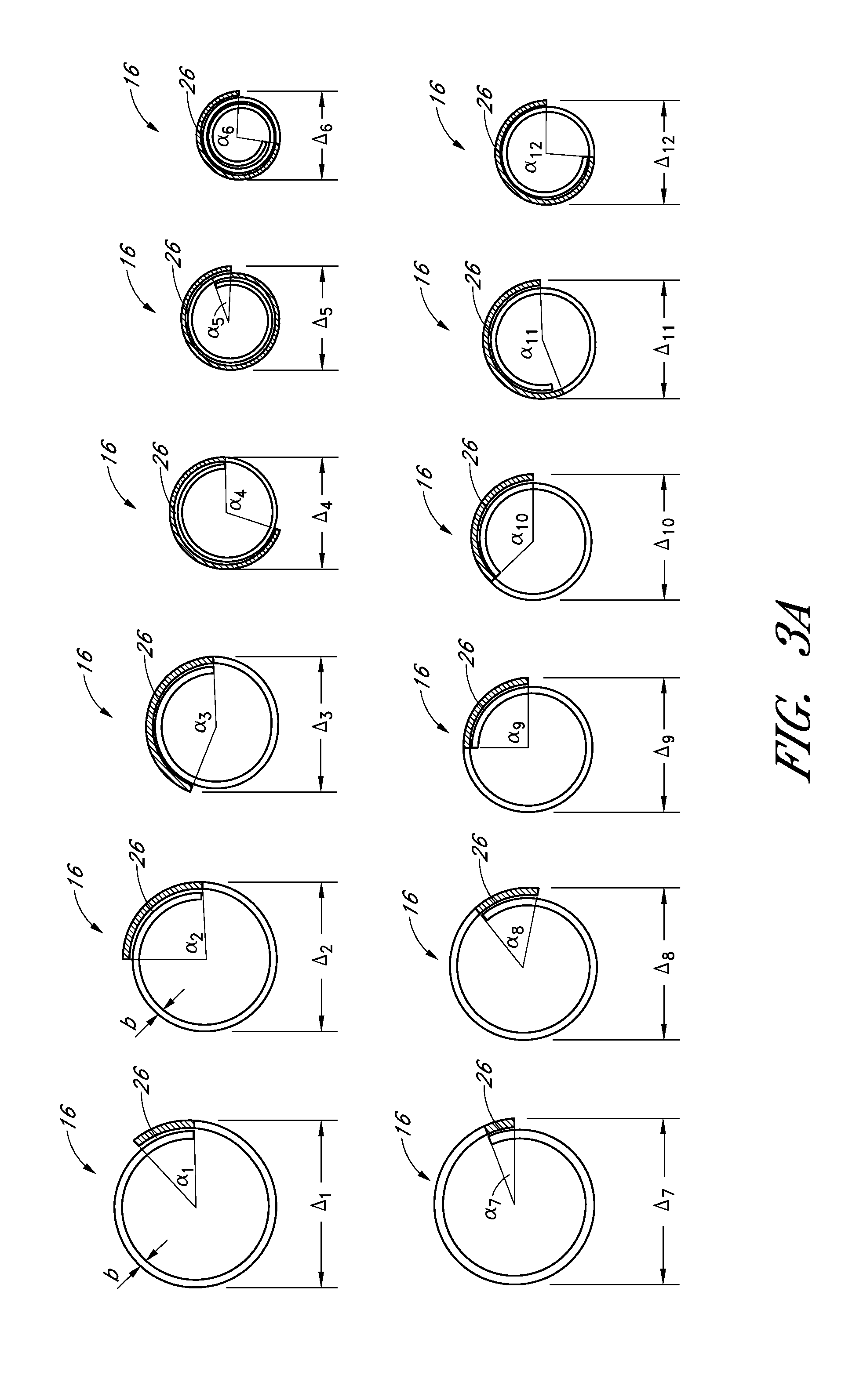Methods and apparatuses for flow restoration and implanting members in the human body
a technology of applied in the field of methods and apparatuses for flow restoration and human body implanting members, can solve the problems of unintended additional clots downstream, difficult to retain and hold a thrombus, and not working well for soft thrombi
- Summary
- Abstract
- Description
- Claims
- Application Information
AI Technical Summary
Benefits of technology
Problems solved by technology
Method used
Image
Examples
Embodiment Construction
[0035]Unless defined otherwise, all technical and scientific terms used herein have the same meanings as commonly understood by one of ordinary skill in the art. Although any methods and materials similar or equivalent to those described herein can be used in the practice or testing of the embodiments described herein, the preferred methods, devices, and materials are described herein.
Devices
[0036]With reference to FIGS. 1-3, a device 10 for flow restoration and / or for use as an implantable member can comprise a guidewire 12, a connection mechanism 14, and a self-expanding member 16.
[0037]The self-expanding member 16 can comprise a mesh structure. The mesh structure can be formed, for example, by laser cutting a preformed tube (i.e. by etching), by interconnecting a multitude of filaments by laser welding, or by other suitable methods. In a preferred arrangement, the self-expanding member 16 is initially laser cut from a tube, such that a longitudinal slit (i.e. cut) along a length ...
PUM
 Login to View More
Login to View More Abstract
Description
Claims
Application Information
 Login to View More
Login to View More - Generate Ideas
- Intellectual Property
- Life Sciences
- Materials
- Tech Scout
- Unparalleled Data Quality
- Higher Quality Content
- 60% Fewer Hallucinations
Browse by: Latest US Patents, China's latest patents, Technical Efficacy Thesaurus, Application Domain, Technology Topic, Popular Technical Reports.
© 2025 PatSnap. All rights reserved.Legal|Privacy policy|Modern Slavery Act Transparency Statement|Sitemap|About US| Contact US: help@patsnap.com



